15 Best Tourist Places in AyodhyaAyodhya is a well-known city in the Indian state of Uttar Pradesh. Ayodhya is formally known as Saketa, and it is one of the oldest cities in the world. This city is very beautiful, and people like to come to this place from far and wide. Today in this article, we will discuss the Best Tourist Place in Ayodhya. 1. Ram Janmabhoomi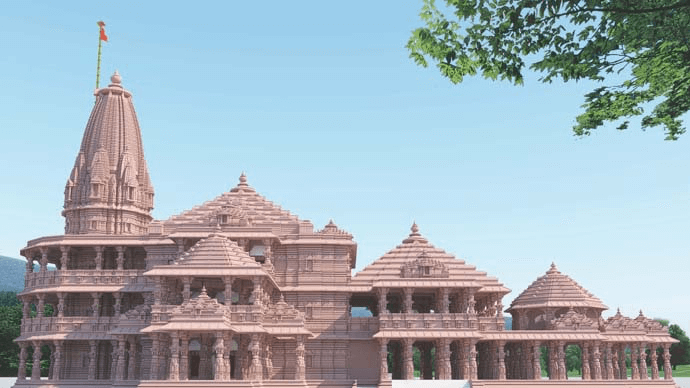
The Ram Janmabhoomi is a sacred location that must not be missed. According to Hindu tradition, the Ram Janmabhoomi, which translates as "Ram's Birthplace," is believed to have been the location of Lord Ram's birth. According to the Indian epic Ramayana, Ram, Lord Vishnu's seventh avatar, has grown up beside the Sarayu River, which flows through Ayodhya, where he is said to have been born. The Ram Janmabhoomi land, which had been a source of contention for decades, was finally transferred to a trust by the Supreme Court of India to construct the Ram Temple. The planned design for the temple is abundant and spectacular in its scale and scope. The Prime Minister of India, Narendra Modi, held the groundbreaking ceremony to lay the foundation stone for the Ram Temple in Ayodhya on the 5th of August in the year 2020. The Ram Janmabhoomi site was the former location of the Babri Masjid, which is now a national monument. It is claimed that the Mughals razed a Hindu sanctuary to construct this mosque at the site of Lord Ram's birthplace. In 1992, Hindu nationalists demolished the Babri Masjid, igniting a sequence of deadly riots throughout India that continued for years. In October 2019, a Supreme Court panel of five justices ruled that the land be transferred to a trust to construct the Ram Temple. The Sunni Waqf Board was also allocated 5 acres of property to construct a mosque. 2. Hanuman Garhi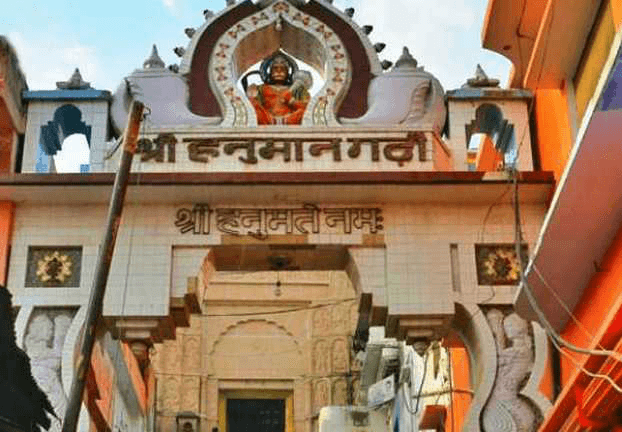
Hanuman Garhi is a Hindu temple dedicated to the Hindu God Hanuman located in Sai Nagar. The temple dates back to the 10th century. In Ayodhya, it is considered one of the most significant temples since it is usual to visit Hanuman Garhi before visiting the Ram Temple. It is claimed that Lord Hanuman still resides in this temple and protects Ayodhya. The hilltop temple's 76-staircase route to the door is a work of art. A 6-inch-tall Hanuman statue stands amid a panoramic picture of the surrounding hills and is housed within the panoramic view. The main temple's inner cave is embellished with countless sculptures of Lord Hanuman and his mother, Maa Anjani, worshiped here. Each year, thousands of pilgrims go to the Hanuman Garhi to commemorate the birth of Lord Ram and Lord Hanuman on their respective feast days, Ram Navami and Hanuman Jayanti. 3. Kanak Bhawan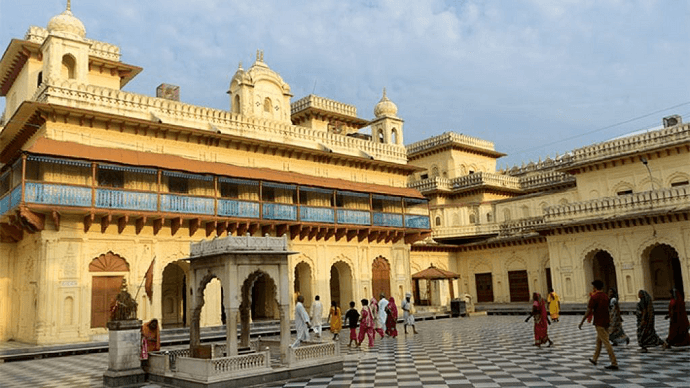
Located in Tulsi Nagar, near the Ram Janmabhoomi, the Kanak Bhawan is erected in the northeastern part of the complex. This temple, also known as Sone-ka-Ghar, was built in 1891 and is dedicated to the Hindu god Lord Rama and his wife, Goddess Sita. The sanctum sanctorum of Kanak Bhawan, also known as the Golden Palace, has three golden-crowned statues of the two gods under a silver dome, which represents the palace of gold (Garbagriha). It is said that Kaikeyi, Rama's stepmother, gave this temple to Rama and Sita as a gift to commemorate their marriage. Following a planned refurbishment during Vikramaditya's reign, the current location was completely renovated by Vrishbhanu Kunwari, who also designed the original structure. The Sri Vrishbhan Dharma Setu Trust Private Limited is presently in charge of the administration of this temple in the Bundela style. 4. Nageshwarnath Temple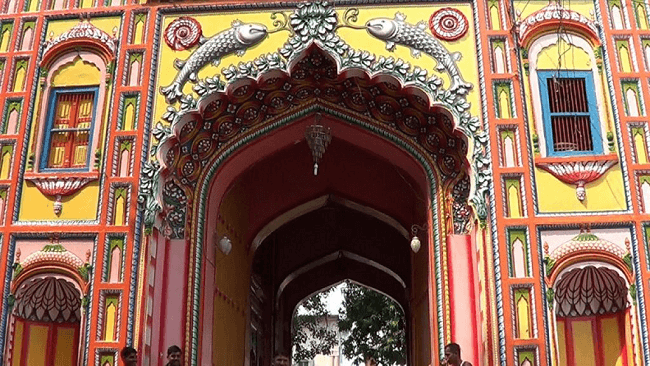
The Nageshwarnath Temple, built in the name of the local god, Lord Nageshwarnath, is next to the Theri Bazaar in Ayodhya and is dedicated to him. Traditionally, it is believed to have been established byKush or Kusha, the son of Lord Rama. During the festivals of Mahashivaratri and Trayodashi, also known as Pradosh Vrat or Pradosh Vratam, in Southern India, the Nageshwarnath Temple attracts numerous devotees. However, even though this hallowed place has been well-maintained since 750 AD, the present temple is supposed to have been renovated in 1750 by Naval Rai, Safar Jung's minister. According to legend, Kush came across a Shiva devotee named Naga Kanya while bathing in the local bathhouse and conversed with him. Upon discovering that the latter had fallen in love with him, he built this Shaiva shrine for Naga Kanya to commemorate the occasion. 5. Gulab Bari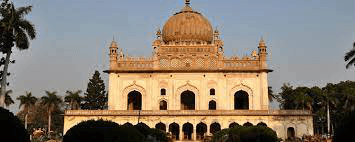
The Gulab Bari, also known as theGarden of Roses, is located in the Vaidehi Nagar neighborhood. It contains the tomb of Nawab Shuja-ud-Daula, the third Nawab of Faizabad (Oudh or Awadh), as well as the tombs of his parents. You can find here pure Nawab-styled architecture in the 18th-century structure of the Gulab Bari, which also features a vast array of rose species and fountains and lush greenery. Gulab Bari, which is protected as a national monument under the Ancient Monuments and Archaeological Sites and Remains Act, is currently being preserved as a part of the country's cultural heritage. There are steps leading to the higher floor, but since these stairs are now in poor condition, most people are not permitted to go to the upper story at this time. In the tomb of Nawab Shuja-ud-Daula and the burial of Shuja-ud-Daula, the tombs of his parents may be found as well. His mother's burial is to the left of Shuja-ud-tomb, Daula's, while his father's grave is to the right of his mother's grave. These tombs are located on the ground level and are covered with wood with intricate carvings. Later, they changed the location of his father's tomb to Delhi. Tourists are drawn to Mughal architecture because of its unique spirit. Visiting Gulab Bari enhances the historical, cultural, and architectural attractiveness of a trip destination's itinerary by providing more historical, cultural, and architectural charm. 6. Treta Ke Thakur Temple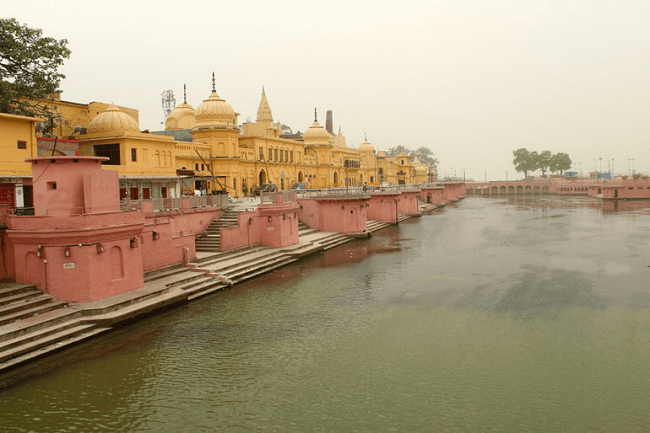
The Treta Ke Thakur Temple, located near the Naya Ghat of Ayodhya, is home to several idols, including Lord Ram, Sita, Lakshman, Hanuman, Bharat, and Sugreev, among others. One black sandstone block is said to have been used to carve out each of these sculptures. Treta Ke Thakur is believed to have been built 300 years ago by Kullu, the region's king. It is said that this structure stands on the same ground as the famous Ashwamedha Yagna, which was performed by Lord Rama thousands of years ago. Ahilyabai Holkar was a Maratha queen who reigned during the 1700s and made further improvements to the temple. It is only open to the public once a year, on the day known as Ekadashi, and for a limited time only. According to the Hindu calendar, this day is observed on the eleventh day of the Shukla Paksha in the month of Karthika. On this day, vibrant celebrations are held in conjunction with preserving traditional practices. 7. Choti Chawni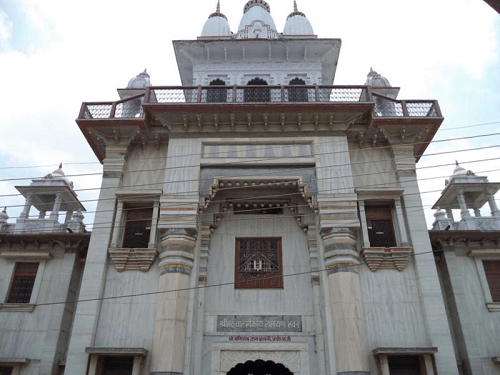
Choti Chawni, also known as Valmiki Bhawan or Maniramdas Chawni, is a magnificent Ayodhya structure entirely white marble. This location is a breath of fresh air and pure beauty, and it is worth visiting. Thirty-four heritage caves are located, with 12 in the south being Buddhist, 17 in the middle being Hindu, and 5 in the north being Jain, making it a significant and elaborate architectural marvel. Even the Kailasha Temple within the caves is a work of art, adding to the intricate beauty of the caves. 8. Sita Ki Rasoi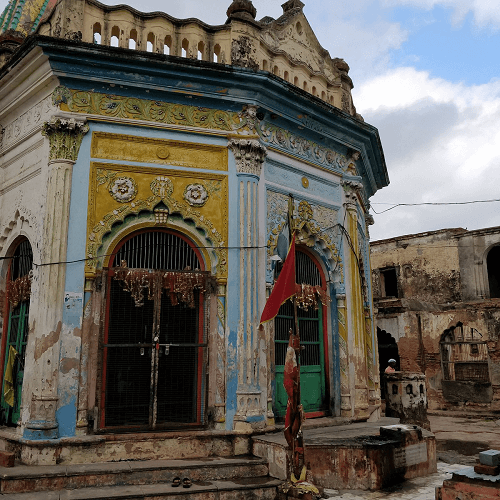
Situated near the Ram Janmabhoomi in Ayodhya's Rajkot on the north-western side of the temple complex, it is believed to have been an old kitchen used by goddess Sita herself at some point in her life. This sacred site, which they built near the Ram Janmabhoomi, is now a temple that houses some exhibit vessels. This Sita Ki Rasoi is a basement kitchen, and it is one of the two kitchens in India that bear Sita's name. The other end of the temple contains the idols of Ram, Lakshman, Bharat, and Shatrughan and their wives Sita, Urmila, Mandavi, and Srutakirti, all of which are who are lavishly clothed and embellished. Sita is revered as the Goddess of Food and called Goddess Annapurna. As a result, the temple continues this tradition by providing free food. Visitors can also make a monetary donation to a charitable organization. 9. Tulsi Smarak Bhawan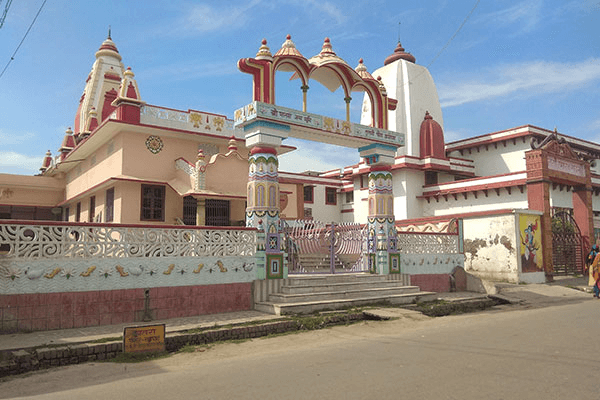
The Tulsi Smarak Bhawan was built to commemorate Goswami Tulsidas, a saint-poet living in the 16th century. The Smarak, located on the eastern end of the National Highway near Rajgang Crossing in Ayodhya, was constructed in 1969 by Sri Vishwanath Das, the Governor of Uttar Pradesh. It is said to have been where Tulsidas produced the Ramcharita, a collection of poems. Along with the huge library, which is a treasure trove of valuable literature, the Smarak also includes a research center known as the 'Ayodhya Research Sansthan', which is dedicated to the study of Ayodhya. It is used to research and add meaning to Ayodhya's literary, cultural, and spiritual knowledge and to study and add meaning to other material. The center also hosts a daily recitation of Ramkatha and an exhibition of Ramayana art and craft. A great collection of facts, statistics, and antiquities about the life and times of Lord Sri Ram were added by the government in 1988, and the Ram Katha Sanghralaya is a museum that houses the collection. Tulsi Jayanti is celebrated with much pomp and circumstance on the seventh day of the month of Shravan, in addition to the customary prayers, devotional songs, and discourses. 10. Bahu Begum ka Makbara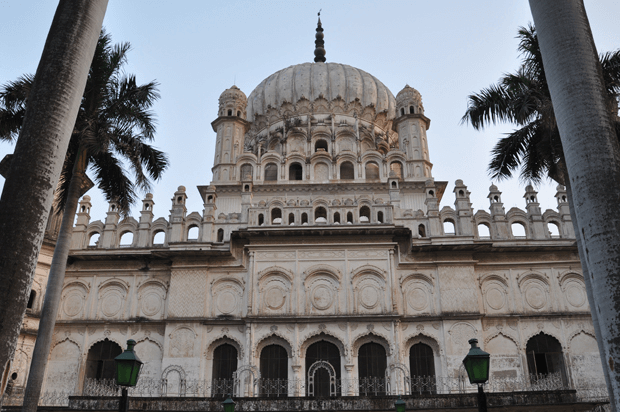
Bahu Begum ka Makbara, located on the Maqbara Road in Faizabad, is the "Taj Mahal of the East" because of its symmetrical design. It is the tallest monument in Faizabad and is renowned for its non-Mughal architectural brilliance. In Faizabad, the unique mausoleum dedicated to Begum Unmatuzzohra Bano, wife and Queen of Nawab Shuja-ud-Daula, stands as the tallest monument and is renowned for its non-Mughal architectural brilliance. With three domes, intricately designed interiors, and exquisitely painted walls and ceilings, the Bahu Begum ka Makbara is a magnificent example of Awadhi architectural craftsmanship. The shrine, built-in 1816 in memory of the Queen and where she was interred after her death, cost three lakh rupees. Currently, the premises are a protected archaeological site under the Archaeological Survey of India (ASI); the gardens in front of the complex have been beautifully landscaped, and the location is a popular tourist destination in India. 11. Raja Mandir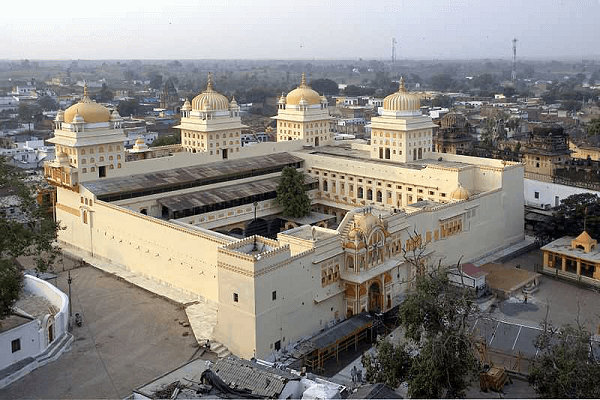
Raja Mandir in Faizabad, which is located on the banks of the river Ghaggar (Sarayu) near Guptar Ghar, has been linked to countless mythical legends time and time again. The temple is home to magnificently sculpted idols of various Hindu Gods and Goddesses, all of whom are lavishly ornamented with silken fabrics and precious jewellery. The temple's beautiful building exemplifies the brilliance of Hindu architectural design at its best. The shrine, formerly famed for its link with Lord Sri Ram, the monarch of Ayodhya, is now a typical temple, with sculptures of various deities on display. Raja Mandir is situated right on the edge of the river creating a captivating reflection of the shrine in the waters, a sight for the eyes. Many tourists come to this location every year. 12. Ram Katha Park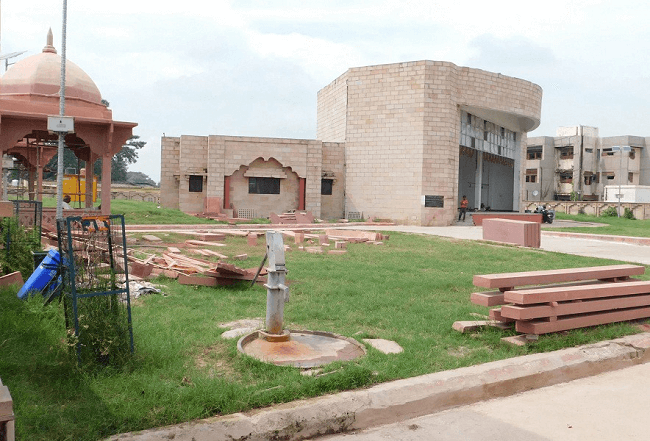
Ayodhya is constantly thronged with pilgrims and tourists throughout the year because it is the birthplace of Shri Ram. However, even though the city has numerous temples, ghats, historical buildings, and other monuments, the ever-increasing crowds excessively strain these structures and create a slew of other civic problems such as congestion, particularly during the festival seasons. Ram Katha Park was constructed to relieve pressure on these sacred sites and the city's infrastructure. It is a beautiful, spacious, and well-maintained park that offers much-needed respite from the hustle and bustle of the city. The park contains open-air theatre that can be used for various cultural, religious, and spiritual events. Visitor numbers to the park have increased significantly in recent years, and visitors of all ages enjoy spending their evenings and weekends in the spiritually charged environment. The park is busy with public discourses, scripture recitals, and other religious activities. It also provides opportunities for budding artists, both from the local community and from other parts of the world, to demonstrate their abilities through theatrical performances, dance, music, and poetry. 13. Moti Mahal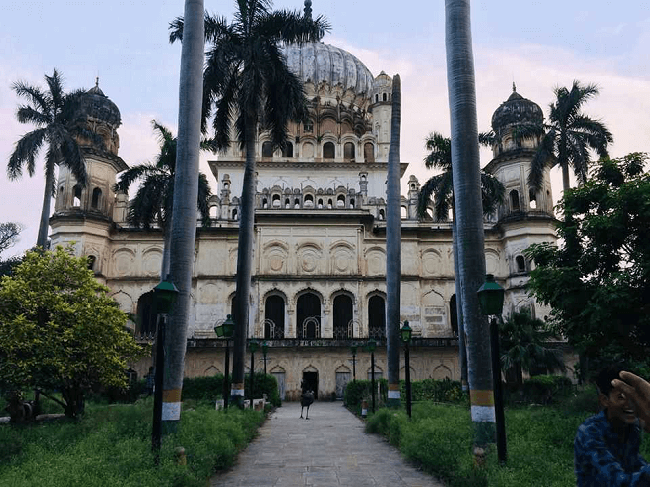
Moti Mahal is a monument in Faizabad with historical and cultural value. Moti Mahal is also known as "Pearl Palace". The tourists come from all over the world. Moti Mahal is a popular place for tourists to visit when they visit Faizabad. People from all over the world and India come to see it. The Moti Mahal in the city is known for its grandeur as a building and for capturing this culture's essence. In Uttar Pradesh, Moti Mahal is one of the heritage sites with its unique history. You should also check out other places in Faizabad in the Indian state of Uttar Pradesh besides the Moti Mahal, which is a great place to see. It's easy to plan a short trip to Faizabad while the tourists are on a trip to Uttar Pradesh. The beautiful buildings that the Mughal rulers built during their time in charge of Faizabad added a lot of charm and beauty to the city. A visit to the buildings is worth it because they show off their architectural skills. 14. Dashrath Bhavan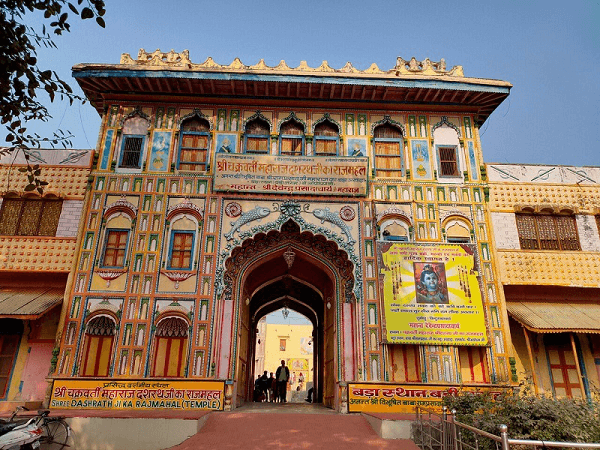
It is located in the center of the city, in Ramkot Ayodhya, near Faizabad; Dashrath Bhavan is the ancient house of King Dashrath-the monarch of Ayodhya and father of Lord Sri Ram-and is open to the public on weekends and holidays. Dashrath Mahal, also known as Bada Asthan or Badi Jagah, is a beautiful palace complex with spectacular temples dedicated to King Ram. This exquisite palace, which is said to have served as Lord Rama's boyhood home and King Dasharath's capital, has a beautifully constructed and embellished entryway with lovely murals. The Dashrath Bhavan, although being much smaller than the ideal of a palace, is a sure attraction during festivals such as Ram Vivah, Karthik Mela, Diwali, Ram Navami, and Shravan Mela. 15. Guptar Ghat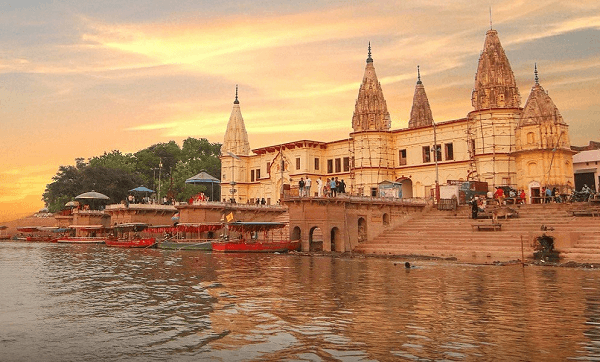
Guptar Ghat is a decent place in Faizabad, near Ayodhya, and is located on the Sarayu River banks, also known as Ghaggar. In the past, this ghat was a neighbor to the colonial Company Gardens, which is today known as Gupta Ghat Van. Guptar Ghat, located on the River Saryu, is a sacred site with significant religious importance. By mythology, this was the location where Lord Rama took his last plunge (Jal samadhi) before departing this world and returning to his original dwelling, 'Baikuntha. The Sita-Ram temple, the Chakra hari shrine, and the Narsingh temple are among the most well-known of the several temples in this area. The Guptar Ghat, rebuilt in the 1800s and continuously improved by the Uttar Pradesh government, is now provided with contemporary facilities. It is a widely held notion among devotees that taking a bath in the Saryu river at this ghat would wash away their sins and alleviate their anxieties about the outside world. The ghat is filled with Lord Rama's name chanting throughout the day as devotees and priests sing songs in adoration of their lord. Raja Mandir and Chakra Hari Vishnu Temple are also nearby. The Guptar Ghat is a popular tourist destination, bordered by temples dedicated to Ram Janki, Charan Paduka, Narasingh, and Lord Hanuman. Raja Darshan Singh constructed Ghats during the first part of the nineteenth century.
Next TopicTourist Places in North India
|
 For Videos Join Our Youtube Channel: Join Now
For Videos Join Our Youtube Channel: Join Now
Feedback
- Send your Feedback to [email protected]
Help Others, Please Share









